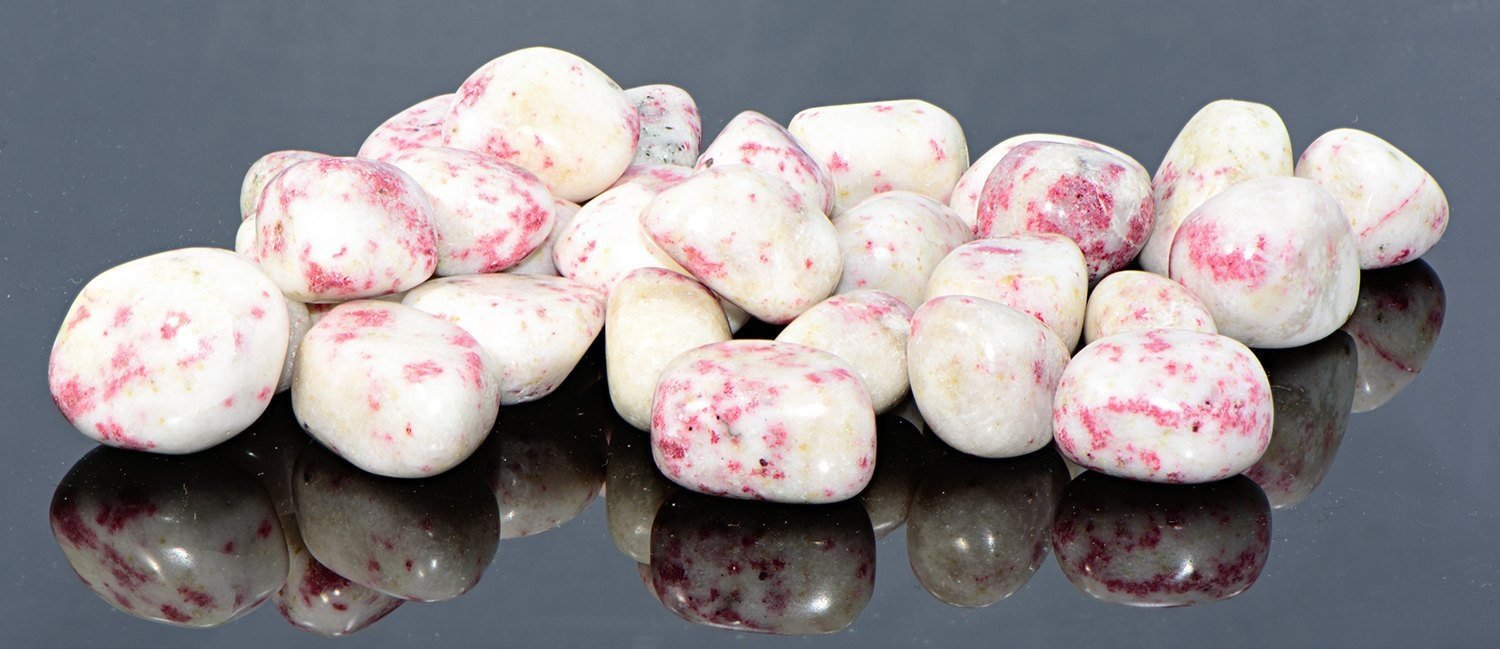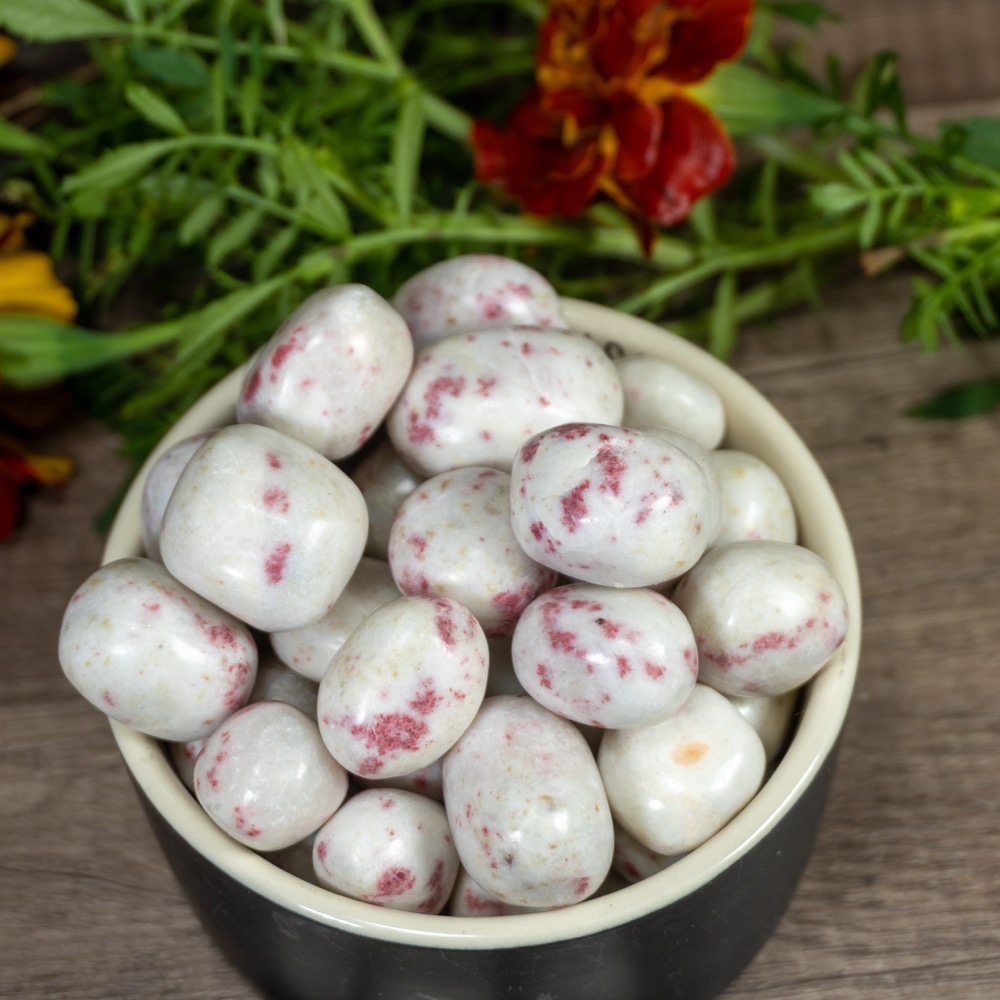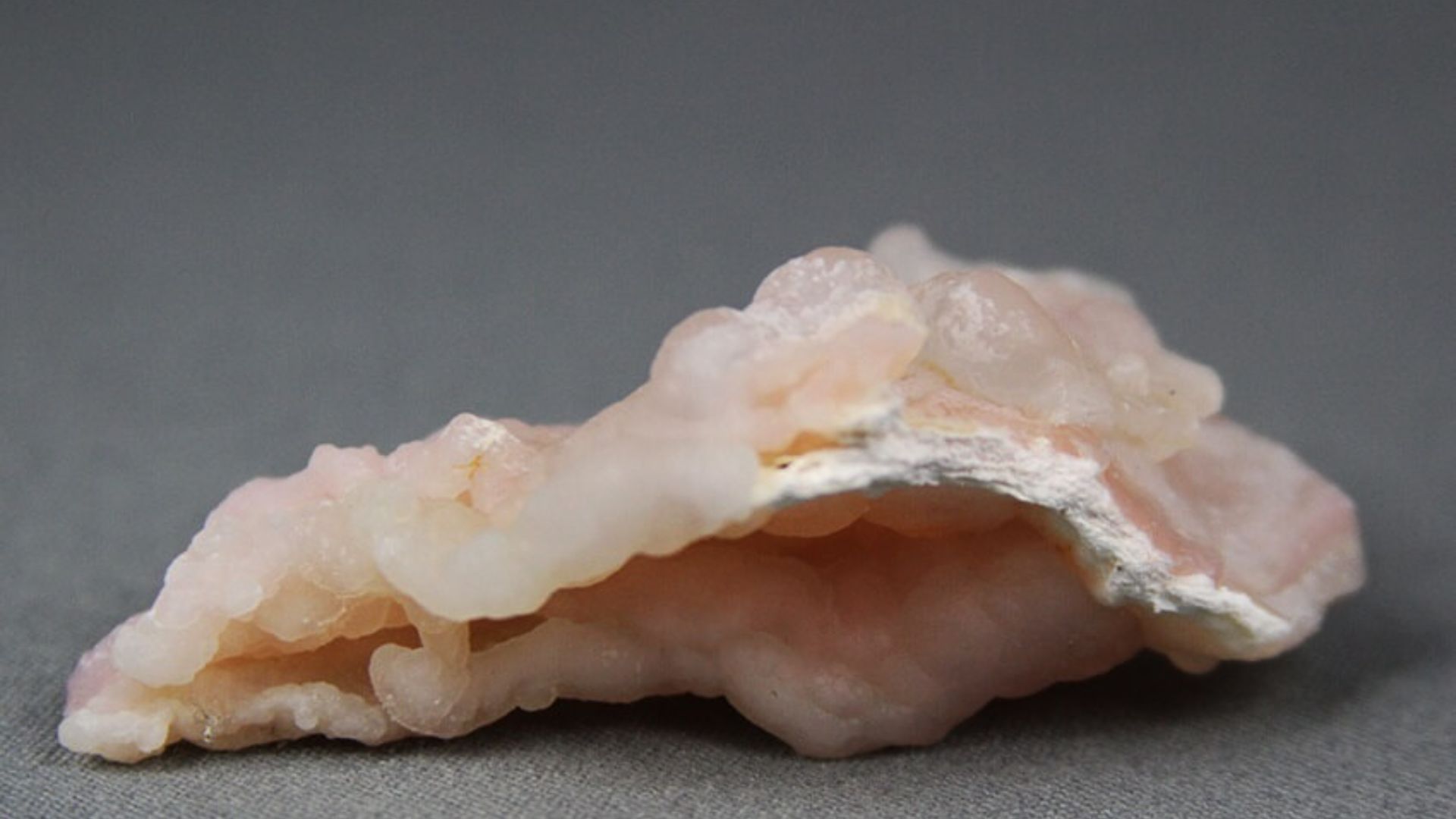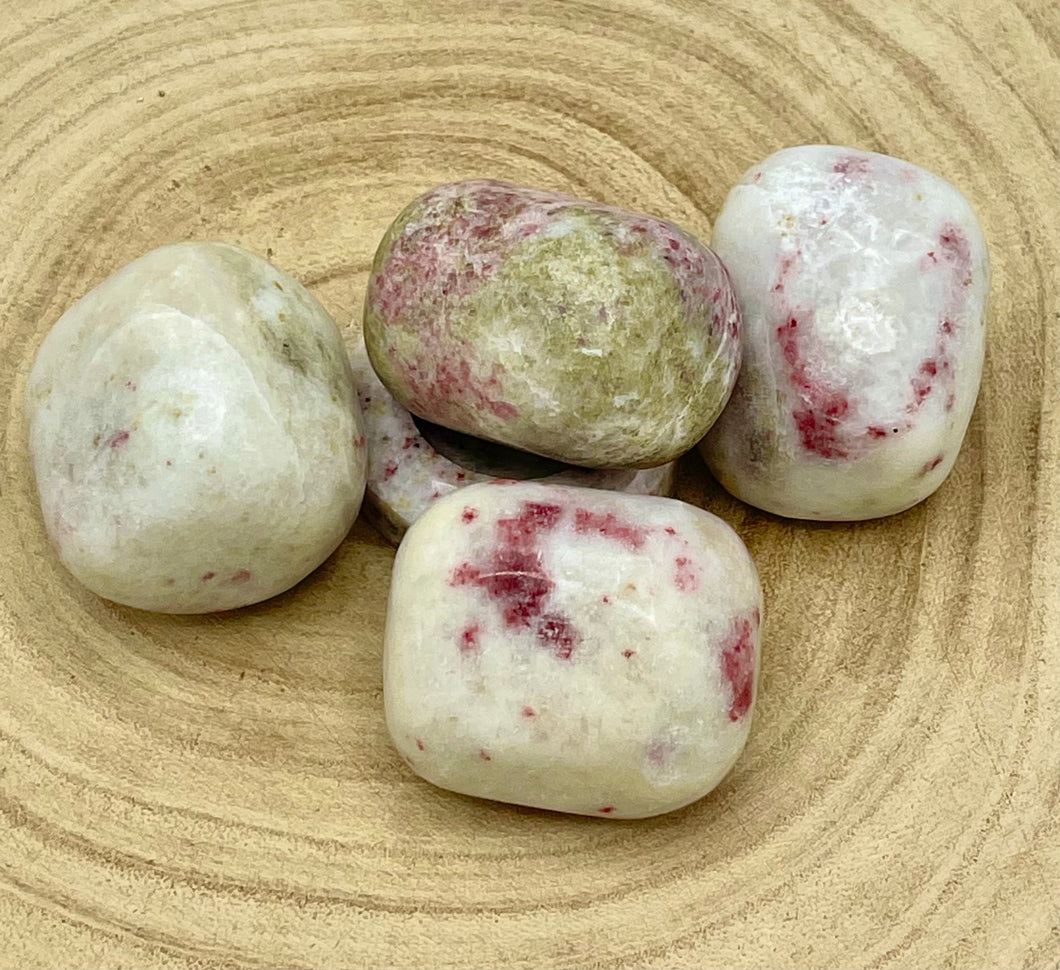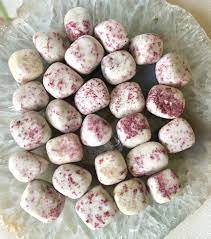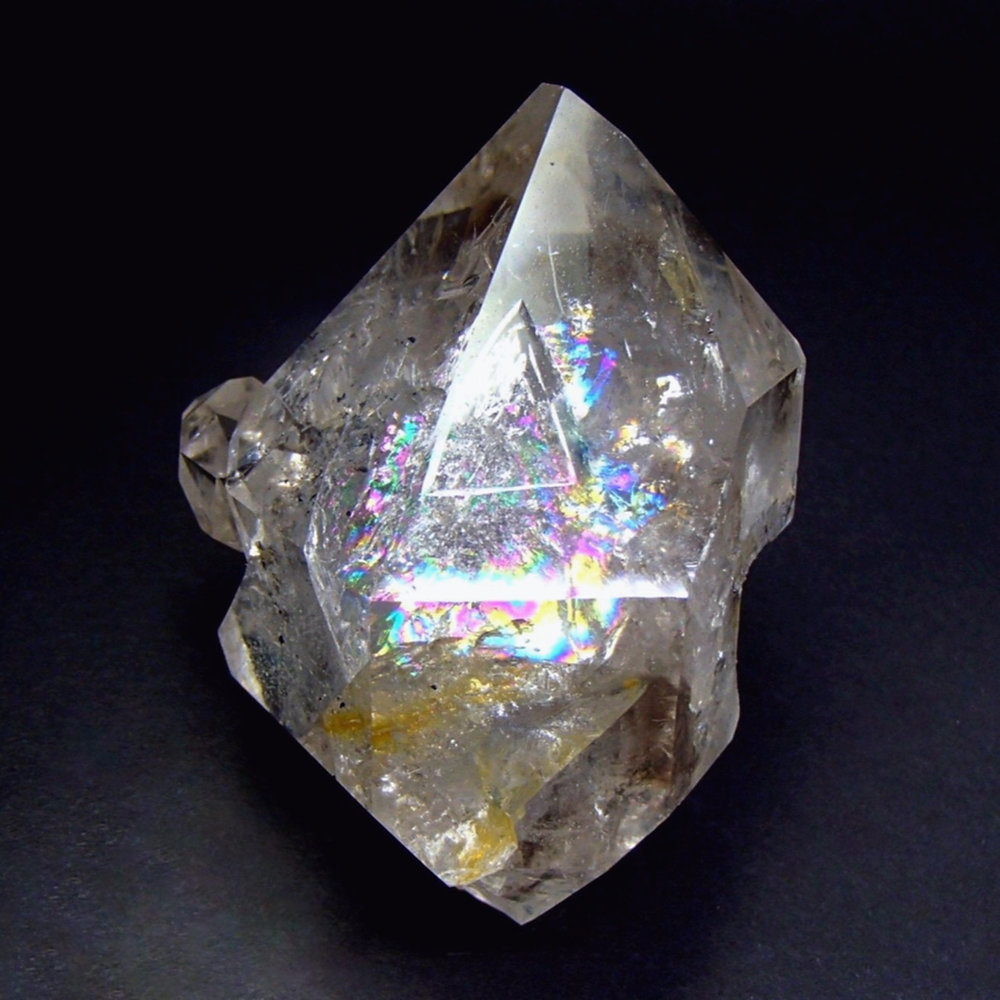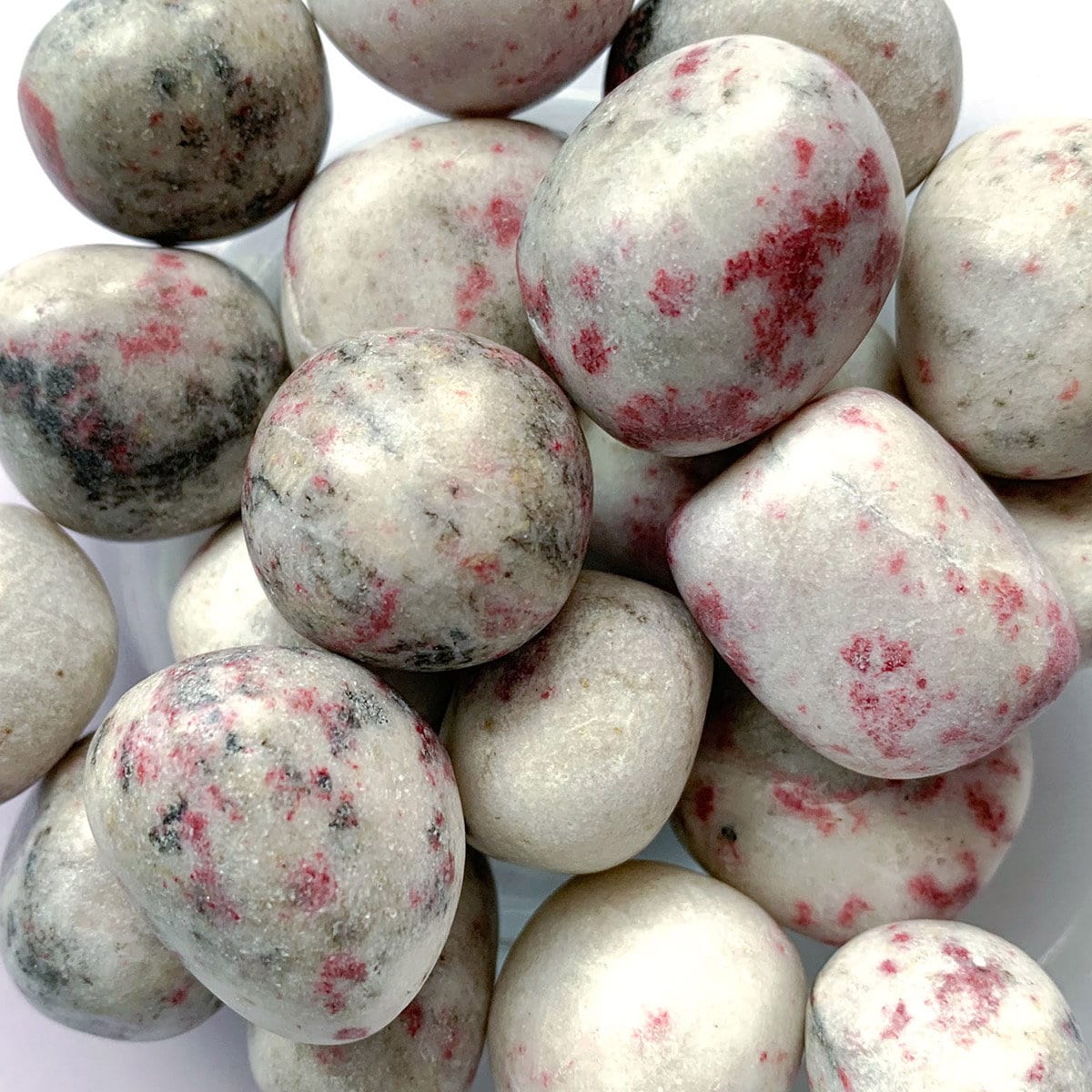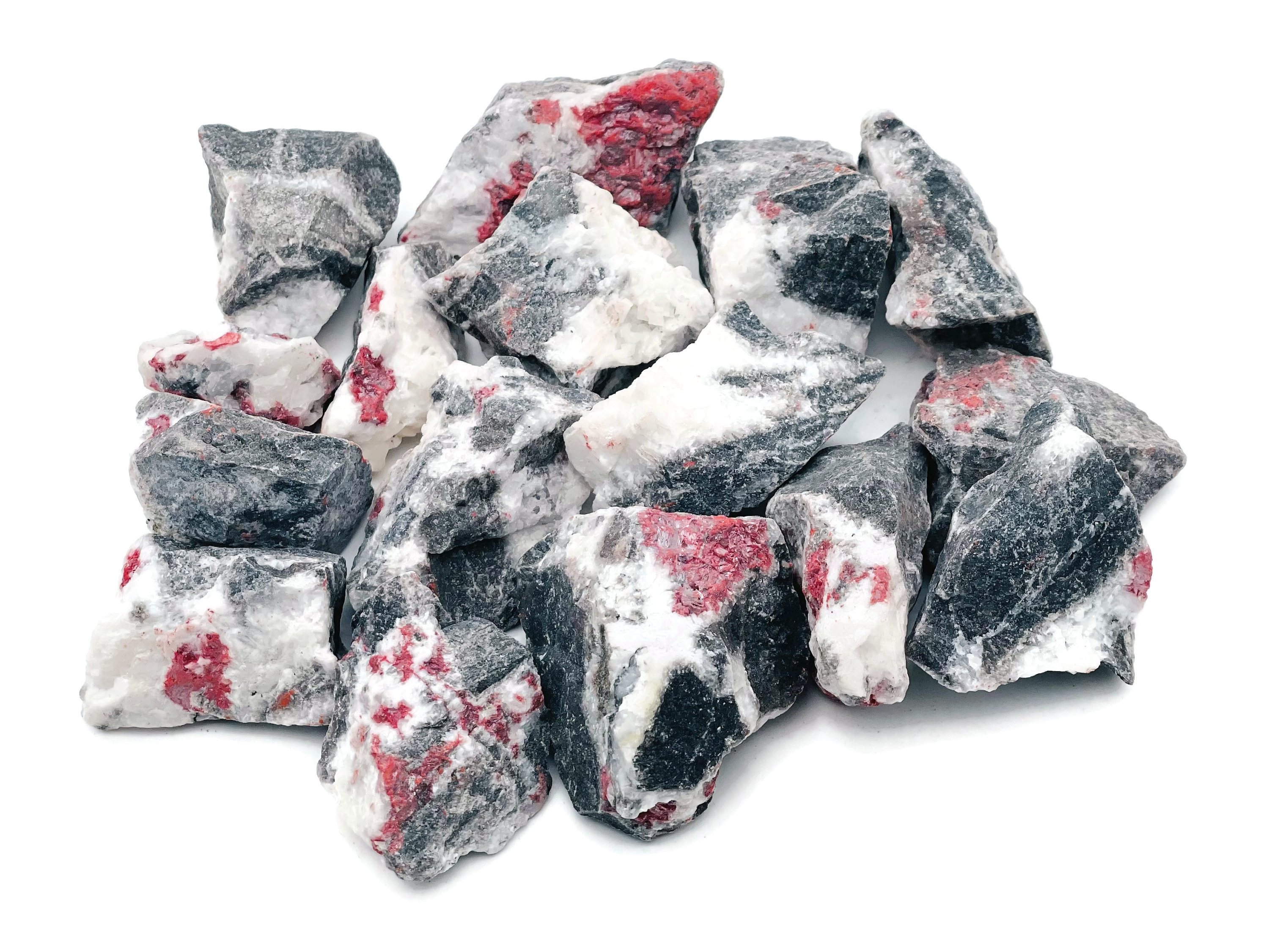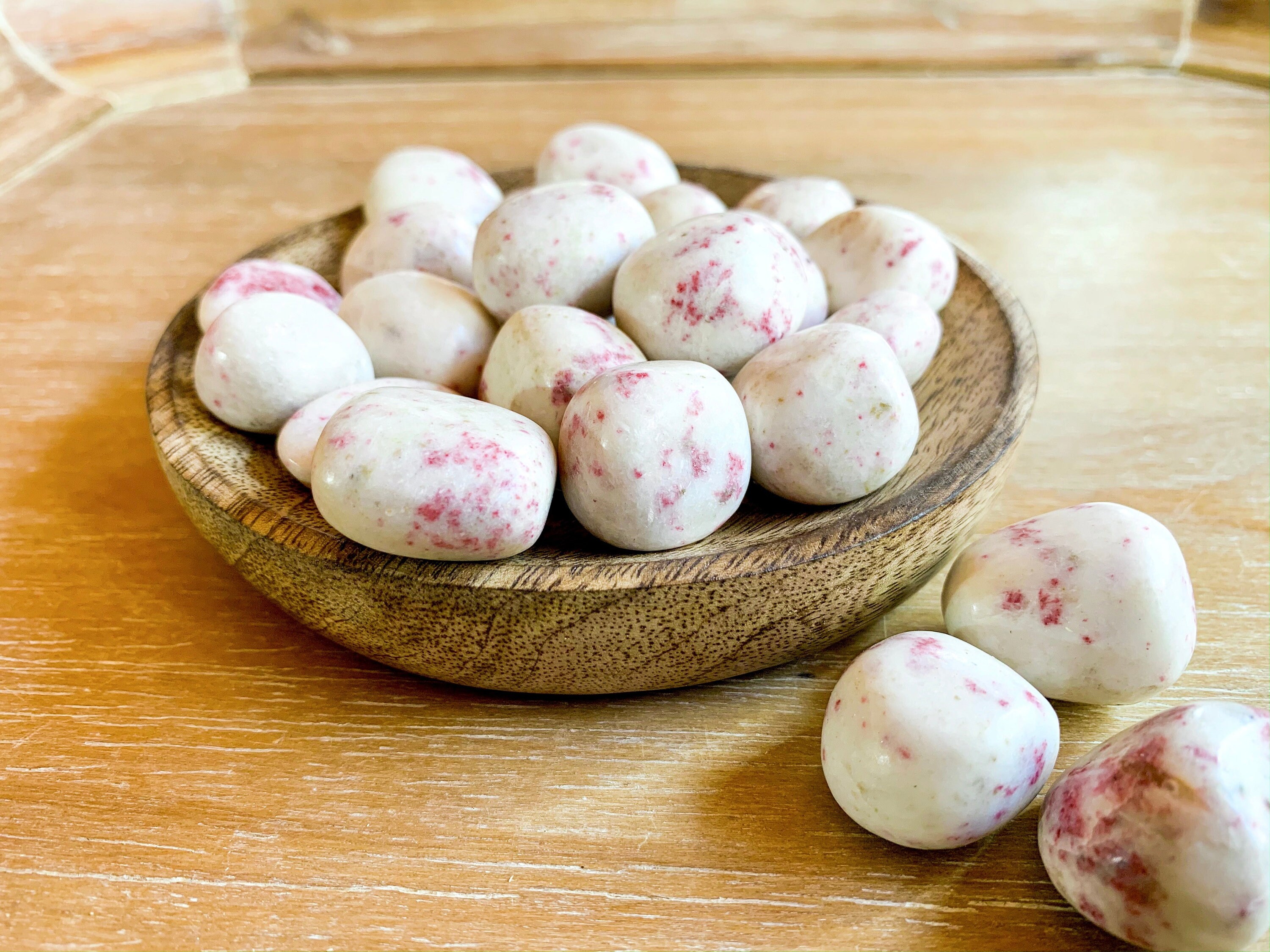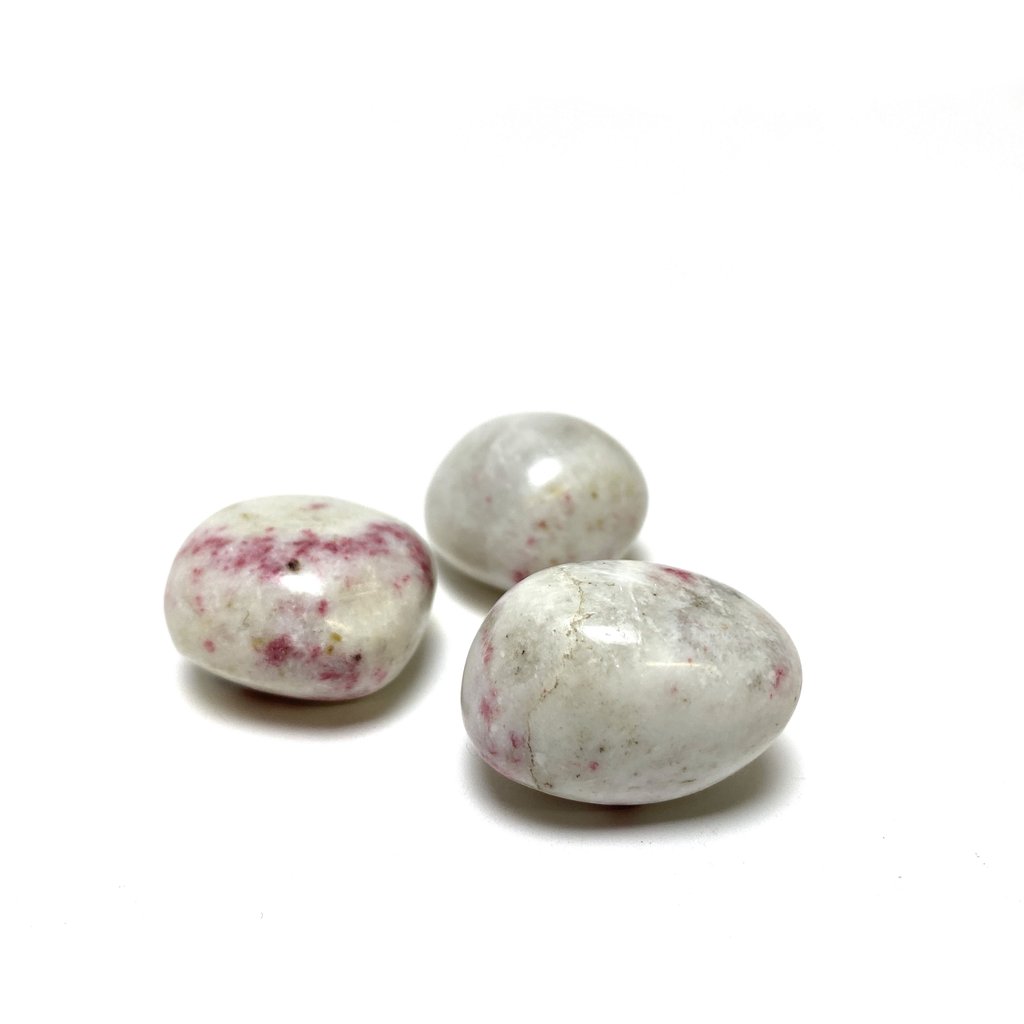
Cinnabrite, a mineral with a name as captivating as its appearance, has captured the fascination of geologists and mineral enthusiasts alike. In this comprehensive exploration, we will delve deep into the world of Cinnabrite, uncovering its physical and chemical properties, its historical significance, and its role in the geological landscape.
As we unravel the mysteries surrounding this remarkable mineral, we will also discuss its applications and its potential impact on various industries. Cinnabrite, with its vibrant red hue and unique composition, is an extraordinary mineral deserving of a closer look.
What Is Cinnabrite?
Cinnabrite is a stone of solid determination, helping one to achieve and sustain personal autonomy. Cinnabrite crystal has a consistent flow of energy. We can finally realize our goals because of it.
It offers us resolve, the ability to focus, and the means to realize our ambitions. It is a stone representing determination, success, and finding solutions. It aids in breaking one's negative thought patterns. The energies of cinnabrite may help you overcome self-defeating habits and learn to celebrate your achievements.
History Of Cinnabrite
Let us discuss the history of cinnabarine:
The Ancient Origins Of Cinnabrite
Cinnabrite's history traces back thousands of years, with its origins deeply intertwined with ancient civilizations. Its striking red color and association with mercury endowed it with a special significance in various cultures. In ancient China, Cinnabrite was utilized as a pigment in artwork, while in Aztec culture, it held symbolic value and was incorporated into religious ceremonies.
Alchemical Pursuits And Mystical Beliefs
During the Middle Ages, Cinnabrite gained prominence in alchemical practices. Alchemists believed that Cinnabrite, being rich in mercury, possessed transformative properties.
It was often used in their experiments in pursuit of the elusive goal of transmutation, the transformation of base metals into noble ones. This mystical association further elevated Cinnabrite's status.
Cinnabrite In Renaissance Art And Medicine
The Renaissance period witnessed a resurgence of interest in Cinnabrite, particularly in the realms of art and medicine. Artists sought its vivid red pigment for their masterpieces, and it became a prized component in the palette of many renowned painters.
In the field of medicine, Cinnabrite was used for its perceived healing properties, albeit without a thorough understanding of its chemical composition.
Cinnabrite In The Modern Era - A Mineral Of Scientific Inquiry
As scientific knowledge expanded, so did the understanding of Cinnabrite's composition and properties—the recognition of its high mercury content led to a more cautious approach to its handling. Scientists began to explore its potential applications in various fields, including electronics and semiconductor technology, driven by its unique chemical characteristics.
Cinnabrite Today - A Collector's Gem And Geological Indicator
In contemporary times, Cinnabrite remains a sought-after mineral among collectors and enthusiasts. Its rarity, coupled with its vibrant red coloration, renders it a coveted addition to mineral collections and a valuable gemstone for jewelrydesigners.
Additionally, Cinnabrite's presence continues to serve as a valuable indicator for geologists studying geological formations, shedding light on the Earth's past processes.
Environmental Considerations And Future Prospects
With increased awareness of the environmental impacts associated with mercury, the handling and usage of Cinnabrite have come under scrutiny. Efforts are being made to find alternative materials with less environmental impact, even as researchers continue to explore Cinnabrite's potential in cutting-edge technologies.
As we move forward, balancing the appreciation of Cinnabrite's beauty and historical significance with responsible usage and environmental stewardship will be paramount.
Types Of Cinnabrite - Exploring Varieties And Formations
Cinnabrite, a captivating mineral known for its vibrant red color, occurs in various forms and structures. Understanding the different types of Cinnabrite provides valuable insights into its geological origins and the diverse environments in which it can be found.
Crystalline Cinnabrite
Well-defined, three-dimensional crystal structures characterize crystalline Cinnabrite. These specimens showcase the mineral's natural geometric patterns and often exhibit sharp edges and defined faces. Collectors highly prize Crystalline Cinnabrite for its aesthetic appeal and the precision of its crystal formations.
Botryoidal Cinnabrite
Botryoidal Cinnabrite, in contrast to crystalline forms, presents a smooth, rounded, and spherical surface. This type of Cinnabrite resembles clusters of grapes or small nodules with a distinct lack of sharp edges or facets. The smooth, lustrous surface of botryoidal Cinnabrite showcases the mineral's unique ability to form rounded, organic shapes.
Massive Cinnabrite
Massive Cinnabrite refers to specimens that lack the well-defined crystal structures seen in crystalline varieties. Instead, massive Cinnabrite appears in dense, compact forms, often without distinct boundaries or individual crystals. This type of Cinnabrite is commonly found in mineral deposits where crystallization is hindered, leading to a more homogenous appearance.
Stalactitic Cinnabrite
Stalactitic Cinnabrite exhibits a structure reminiscent of hanging icicles or stalactites. This form of Cinnabrite forms as mineral-rich fluids drip and deposit layers over time, creating elongated, cylindrical structures. Stalactitic Cinnabrite can be found in caves, geothermal areas, and other environments conducive to this specific growth pattern.
Encrusting Cinnabrite
Encrusting Cinnabrite manifests as a layer or coating on the surface of other minerals or host rocks. This type of Cinnabrite is often found as thin layers that cover a substrate, creating a distinctive contrast between the host rock and the vivid red coating. Encrusting Cinnabrite can provide valuable insights into the geological processes that shaped its formation.
Fibrous Cinnabrite
Its delicate, thread-like crystal structures characterize fibrous Cinnabrite. This type of Cinnabrite forms long, thin strands that may appear interwoven or tangled. The fibrous texture gives the mineral a distinctive appearance and may influence its physical properties.
Cinnabrite Properties - Unraveling The Intriguing Characteristics Of A Remarkable Mineral
Cinnabrite, a mineral known for its striking red coloration and unique chemical composition, possesses a range of intriguing properties that make it a subject of fascination for geologists, collectors, and enthusiasts alike. In this section, we will delve into the key physical and chemical properties that define Cinnabrite and set it apart in the world of minerals.
Chemical Composition - HgS - Mercury Sulfide
At the core of Cinnabrite's composition lies mercury sulfide, denoted chemically as HgS. This chemical formula reflects the presence of mercury (Hg) and sulfur (S), arranged in a specific crystalline structure. This unique combination gives Cinnabrite its distinctive properties, including its vibrant red hue.
Color And Luster - A Vibrant Red Radiance
The most prominent feature of Cinnabrite is its vivid red color, which ranges from deep scarlet to a more subdued maroon. This rich hue is a result of the mineral's mercury content and its crystalline structure, which efficiently absorbs and reflects red light. In terms of luster, Cinnabrite exhibits a range from adamantine (shiny and reflective like a diamond) to metallic, depending on crystal faces and the presence of impurities.
Transparency And Transparency - A Window To Its Interior
Cinnabrite crystals can vary in transparency from translucent to transparent. It means that light can pass through the mineral to some extent, allowing for an intriguing play of light within the crystal. This property adds to its visual allure and distinguishes it from other minerals with less optical clarity.
Hardness - A Measure Of Durability
On the Mohs scale of mineral hardness, which ranges from 1 (softest) to 10 (hardest), Cinnabrite typically falls between 2 and 2.5. It places it in the lower range of hardness, making it relatively soft compared to many other minerals. This characteristic is essential for understanding how Cinnabrite interacts with its environment and its susceptibility to abrasion.
Density - Mercury's Influence
Due to its high mercury content, Cinnabrite is relatively dense compared to other minerals. The specific gravity of Cinnabrite can vary, but it generally falls within a range that reflects its mercury-rich composition. This property is significant in identifying and distinguishing Cinnabrite from other minerals in geological samples.
Cleavage And Fracture - Internal Structure And Breakage Patterns
Cinnabrite typically exhibits a subconchoidal to uneven fracture, which means that when broken, it forms irregular, non-smooth surfaces. This fracture pattern provides insights into the internal structure of the mineral. Additionally, Cinnabrite lacks significant cleavage planes, which further influences how it breaks when subjected to external forces.
Streak - Revealing The True Color
When powdered, Cinnabrite leaves a distinctive reddish-brown streak. This streak color is a valuable diagnostic property for identifying Cinnabrite, as it provides a reliable indication of the mineral's actual color, even in powdered form.
Exploring The Potential Benefits Of Cinnabrite - From Aesthetics To Science
Cinnabrite, with its distinctive red hue and intriguing properties, holds significance beyond its aesthetic appeal. This mineral, known for its unique composition of mercury sulfide (HgS), has found applications in various domains, ranging from art and culture to scientific research. Below, we delve into the potential benefits of Cinnabrite, shedding light on its diverse contributions to different fields.
Aesthetic And Decorative Applications - Enhancing Visual Appeal
Cinnabrite's vibrant red color and striking appearance make it a prized gemstone for jewelry designers and collectors. Its unique hue and distinctive luster create visually captivating pieces that stand out in the world of gemstones. Cinnabrite's presence in jewelry allows individuals to adorn themselves with a mineral that exudes natural beauty and rarity.
Artistic Use And Pigment Production - A Historic Legacy
Throughout history, Cinnabrite has been utilized as a natural pigment in the creation of paints, inks, and dyes. Its intense red color, derived from its mercury content, made it a sought-after material for artists, particularly during periods like the Renaissance. Even today, artists and conservators value Cinnabrite for its historical significance and its ability to contribute to the creation of visually striking artwork.
Geological Indicator - Insight Into Earth's History
Cinnabrite's presence in geological formations serves as a valuable indicator for geologists studying the Earth's past processes. Its association with hydrothermal veins, volcanic activity, and specific mineral deposits offers insights into the conditions and environments in which it formed. By analyzing the presence of Cinnabrite, geologists can piece together the geological history of a region.
Semiconductor Research - Potential Technological Advancements
Due to its high mercury content, Cinnabrite has garnered attention in the field of semiconductor technology. Researchers are exploring its potential applications in advanced electronics, particularly in the development of next-generation transistors and other semiconductor devices. This avenue of research may lead to technological breakthroughs with far-reaching implications.
Cultural And Historical Significance - Preserving Heritage
Cinnabrite's historical use in various cultures, from ancient China to Aztec civilizations, highlights its cultural significance. Today, specimens of Cinnabrite hold historical value, providing a tangible connection to the beliefs, practices, and artistic expressions of bygone eras. Collectors and museums alike treasure Cinnabrite for its role in preserving cultural heritage.
Mineralogical Research - Advancing Scientific Understanding
Mineralogists and researchers find value in studying Cinnabrite for its unique chemical composition and crystallographic properties. By examining Cinnabrite specimens, scientists can gain insights into the broader field of mineralogy and contribute to our understanding of mineral formation, structure, and behavior.
Utilizing Cinnabrite - Exploring Its Diverse Applications
Cinnabrite, a mineral renowned for its vibrant red color and unique composition, has found applications in various fields, from art and jewelry to technology and geology. Its distinctive properties make it a valuable resource with a range of practical uses. Below, we'll delve into some of the critical applications of Cinnabrite.
Art And Pigment Production - Adding Depth To Creations
Throughout history, Cinnabrite has been used as a natural pigment in the production of paints, inks, and dyes. Its intense red color, derived from its mercury content, made it a sought-after material for artists. The use of Cinnabrite in art allows for the creation of vivid and visually striking compositions, adding depth and vibrancy to artistic works.
Jewelry And Ornamental Objects - Showcasing Natural Beauty
Cinnabrite's striking red hue and unique appearance make it a prized gemstone for jewelry designers and collectors. Whether faceted or in its natural form, Cinnabrite's vibrant coloration adds a distinctive touch to jewelry pieces. Its rarity and visual appeal make it a sought-after addition to both contemporary and vintagejewelry designs.
Semiconductor Technology - Exploring Cutting-Edge Applications
Due to its high mercury content, Cinnabrite has garnered interest in the field of semiconductor technology. Researchers are exploring its potential applications in advanced electronics, particularly in the development of next-generation transistors and other semiconductor devices. This avenue of research may lead to technological breakthroughs with far-reaching implications.
Geological Indicators - Providing Insights Into Earth's History
Cinnabrite's presence in geological formations serves as a valuable indicator for geologists studying the Earth's past processes. Its association with hydrothermal veins, volcanic activity, and specific mineral deposits offers insights into the conditions and environments in which it formed. By analyzing the presence of Cinnabrite, geologists can piece together the geological history of a region.
Historical And Cultural Significance - Preserving Heritage
Cinnabrite's historical use in various cultures, from ancient China to Aztec civilizations, highlights its cultural significance. Today, specimens of Cinnabrite hold historical value, providing a tangible connection to the beliefs, practices, and artistic expressions of bygone eras. Collectors and museums alike treasure Cinnabrite for its role in preserving cultural heritage.
Metaphysical And Spiritual Practices - Energetic Properties
For some individuals, Cinnabrite is used in metaphysical and spiritual practices. It is believed to possess specific energetic properties that may aid in meditation, energy work, and spiritual growth. While these beliefs are subjective and not scientifically proven, many practitioners find value in incorporating Cinnabrite into their spiritual and energetic practices.
Cinnabrite And Chakras - Balancing Energies With The Red Crystal
Cinnabrite, with its vibrant red hue and unique energetic properties, is believed by some to hold a special connection with specific chakras in the body. Chakras are energy centers within the human body that are thought to correspond to different aspects of physical, emotional, and spiritual well-being. In this section, we'll explore how Cinnabrite is associated with specific chakras and how it is believed to influence energy flow.
Root Chakra (Muladhara) - Stability And Grounding
The Root Chakra, located at the base of the spine, is associated with feelings of stability, security, and a sense of being grounded. It is often linked to our basic survival needs and feelings of safety. Cinnabrite, with its deep red color, is believed to resonate strongly with the Root Chakra. Using or wearing Cinnabrite can help activate and balance this chakra, promoting a sense of stability and security.
Sacral Chakra (Svadhisthana) - Creativity And Passion
The Sacral Chakra, located in the lower abdomen, is associated with creativity, passion, and our ability to express our emotions. It is linked to our sexual and creative energies. Cinnabrite's vivid red color is thought to align with the energies of the Sacral Chakra. By working with Cinnabrite, individuals may aim to enhance their creative expression, tap into their passions, and cultivate a sense of vitality and inspiration.
Solar Plexus Chakra (Manipura) - Confidence And Personal Power
The Solar Plexus Chakra, situated in the upper abdomen, is associated with confidence, self-esteem, and personal power. It is considered the seat of our identity and self-worth. While Cinnabrite's primary resonance is with the lower chakras, some believe that its red energy may also influence the Solar Plexus Chakra, helping to bolster one's confidence and sense of self-empowerment.
Heart Chakra (Anahata) - Love And Compassion
The Heart Chakra, located in the center of the chest, is associated with love, compassion, and our ability to form meaningful connections with others. It governs feelings of love, empathy, and forgiveness. While Cinnabrite's color is more closely aligned with the lower chakras, some practitioners believe that its grounding properties may indirectly support the Heart Chakra by providing a sense of stability and security, allowing for deeper emotional connections.
Throat Chakra (Vishuddha) - Communication And Expression
The Throat Chakra, situated in the throat region, is linked to communication, self-expression, and the ability to speak one's truth. It is associated with clear communication and the ability to express oneself authentically. While Cinnabrite's primary resonance is with the lower chakras, some believe that its grounding properties indirectly support the Throat Chakra by providing a sense of stability and confidence, facilitating more transparent communication.
Cinnabrite - FAQs
What Is Cinnabrite Made Of?
Cherry flower stone is possibly white orthoclase with pink thulite patches: cherry blossom-colored. Beautiful decor rock. Internet sellers call it "Cinnabrite".
Is Cinnabrite The Same As Cinnabar?
Cinnabrite is sometimes mistaken for mercury-containing Cinnabar, a deadly red mineral. The fact that Cinnabar may appear in a white matrix like the non-toxic cinnabrite doesn't help.
What Is Cinnabrite Suitable For?
Cinnabrite resonates with your power center, the Sacral Chakra. This gemstone boosts creativity, kundalini, and life force energy. Metaphysical healing legend states that Cinnabrite heals the body well.
What Is Cinnabrite Used For?
Jewelry, ornamental sculptures, and decorative stones employ cinnabrite. Its bright red hue and unusual patterns make it ideal for jewelry.
Conclusion
Cinnabrite, with its vivid red hue and captivating properties, is a mineral that has intrigued people for centuries. From its formation in hydrothermal veins to its presence in various cultures and its potential applications in modern technology, Cinnabrite is a mineral of both historical and scientific significance. While it offers promising opportunities, its high mercury content also necessitates careful handling to prevent environmental and healthrisks.
As we continue to study and understand Cinnabrite, its mysteries gradually unravel, revealing new insights into the Earth's geological past and its potential contributions to various fields. Whether admired for its beauty in jewelry or investigated for its potential in cutting-edge technologies, Cinnabrite remains a mineral that commands our attention and exploration. Its vibrant presence in the world of minerals is unlikely to fade, and its significance continues to evolve with each discovery.
